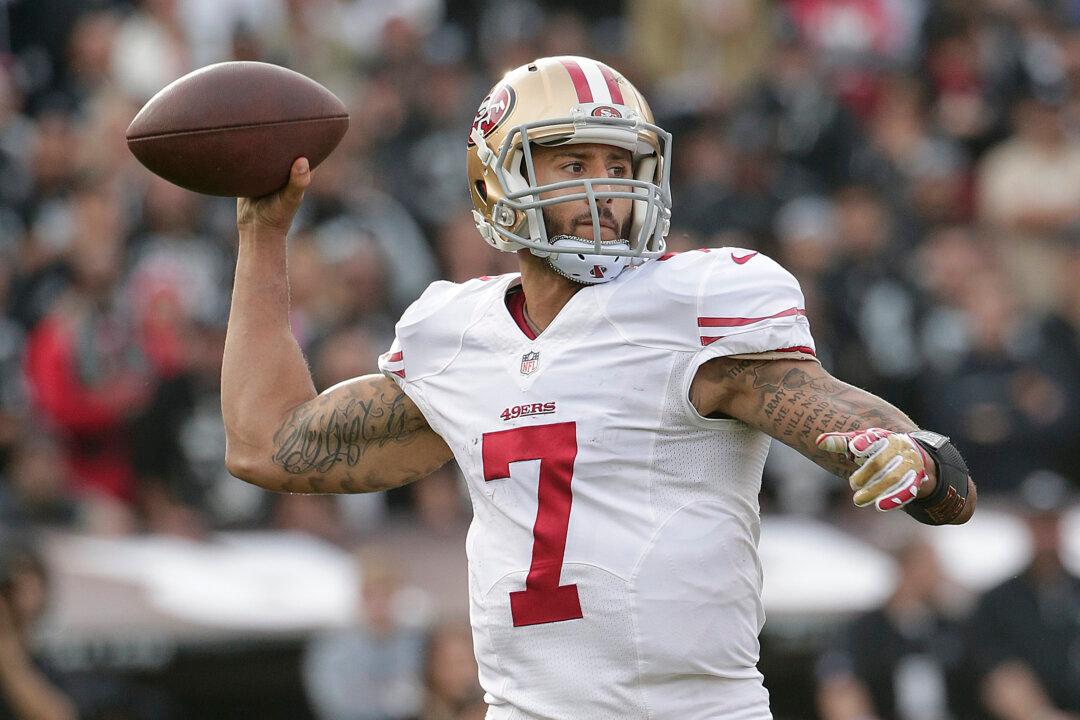San Francisco 49ers quarterback Colin Kaepernick’s recent decision to not stand during the national anthem as a way of protesting police killings of unarmed black men has drawn support and scorn far beyond sports. The Associated Press explains how “The Star-Spangled Banner” became a ritual of American public life, its complicated racial origins and how the song has been used as a form of political resistance
National anthem as ritual of sports
The national anthem and sports first merged in the early 20th century, when “The Star-Spangled Banner” became part of baseball games. The anthem is played before the start of every U.S. major sporting event, where fans and players are expected to salute the flag by placing a hand over the heart while singing along. Not doing so is considered unpatriotic by some.
“It’s important to remember that a lot of these traditions that we take as timeless or dating back to the founders are pretty recent innovations,” said Kevin Kruse, a historian at Princeton University.
___






